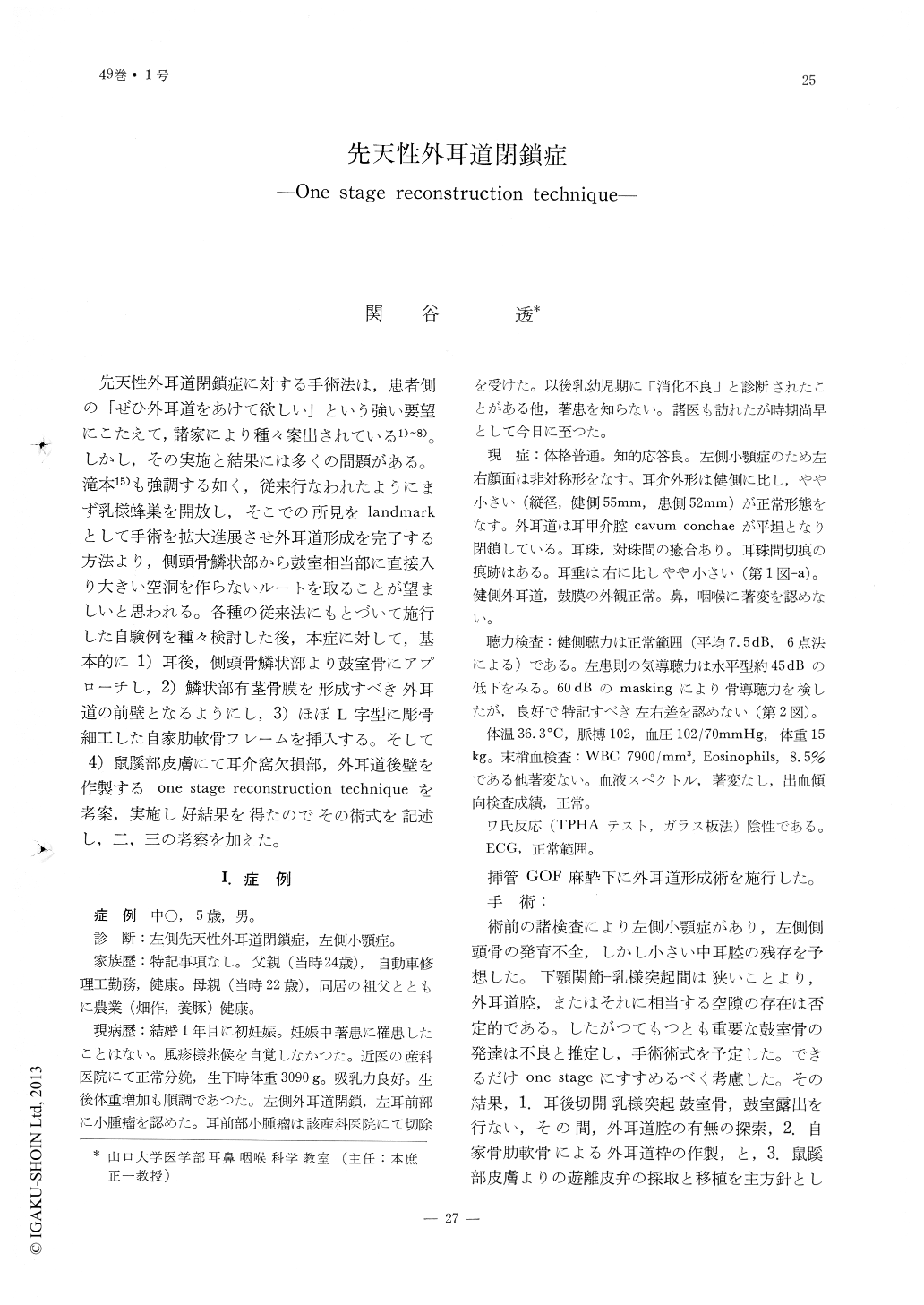Japanese
English
- 有料閲覧
- Abstract 文献概要
- 1ページ目 Look Inside
先天性外耳道閉鎖症に対する手術法は,患者側の「ぜひ外耳道をあけて欲しい」という強い要望にこたえて,諸家により種々案出されている1)〜8)。しかし,その実施と結果には多くの問題がある。滝本15)も強調する如く,従来行なわれたようにまず乳様蜂巣を開放し,そこでの所見をlandmarkとして手術を拡大進展させ外耳道形成を完了する方法より,側頭骨鱗状部から鼓室相当部に直接入り大きい空洞を作らないルートを取ることが望ましいと思われる。各種の従来法にもとづいて施行した自験例を種々検討した後,本症に対して,基本的に1)耳後,側頭骨鱗状部より鼓室骨にアプローチし,2)鱗状部有茎骨膜を形成すべき外耳道の前壁となるようにし,3)ほぼL字型に彫骨細工した自家肋軟骨フレームを挿入する。そして4)鼠蹊部皮膚にて耳介窩欠損部,外耳道後壁を作製するone stage reconstruction techniqueを考案,実施し好結果を得たのでその術式を記述し,二,三の考察を加えた。
Reconstruction of a congenital atresia of the external auditory meatus is performed on a 5 year-old boy successfully by means of one stage reconstruction technic. This technic essentially consists of making a shallow incision in the retroauricular region and a wide intact periostium flap at the temporosquamous region to form, later, the anterior wall of the external canal. An L-shaped cartilagenous frame is obtained from the 5th rib, which is inserted beneath the anterior wall touching the exposed malformed tympanic bony ridge. As a final stage a free skin graft is obtained from the inguinal fold, as a relatively wide spindle-shaped graft (3×5 cm), fitted well into canal recipient site. The donor sites are closed by primary sutures.

Copyright © 1977, Igaku-Shoin Ltd. All rights reserved.


